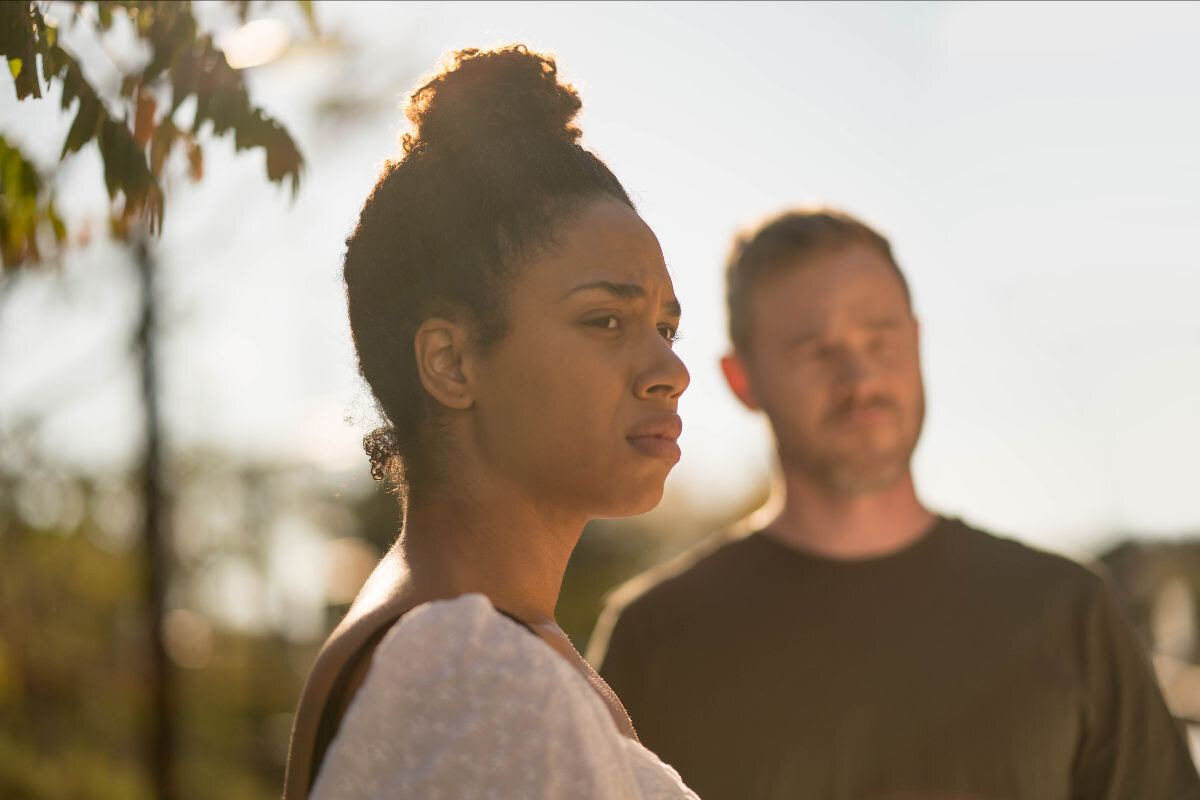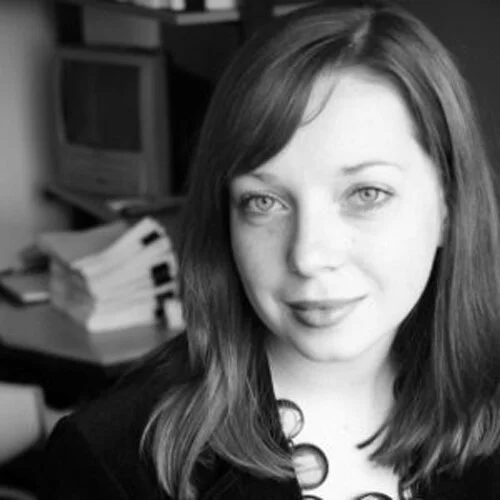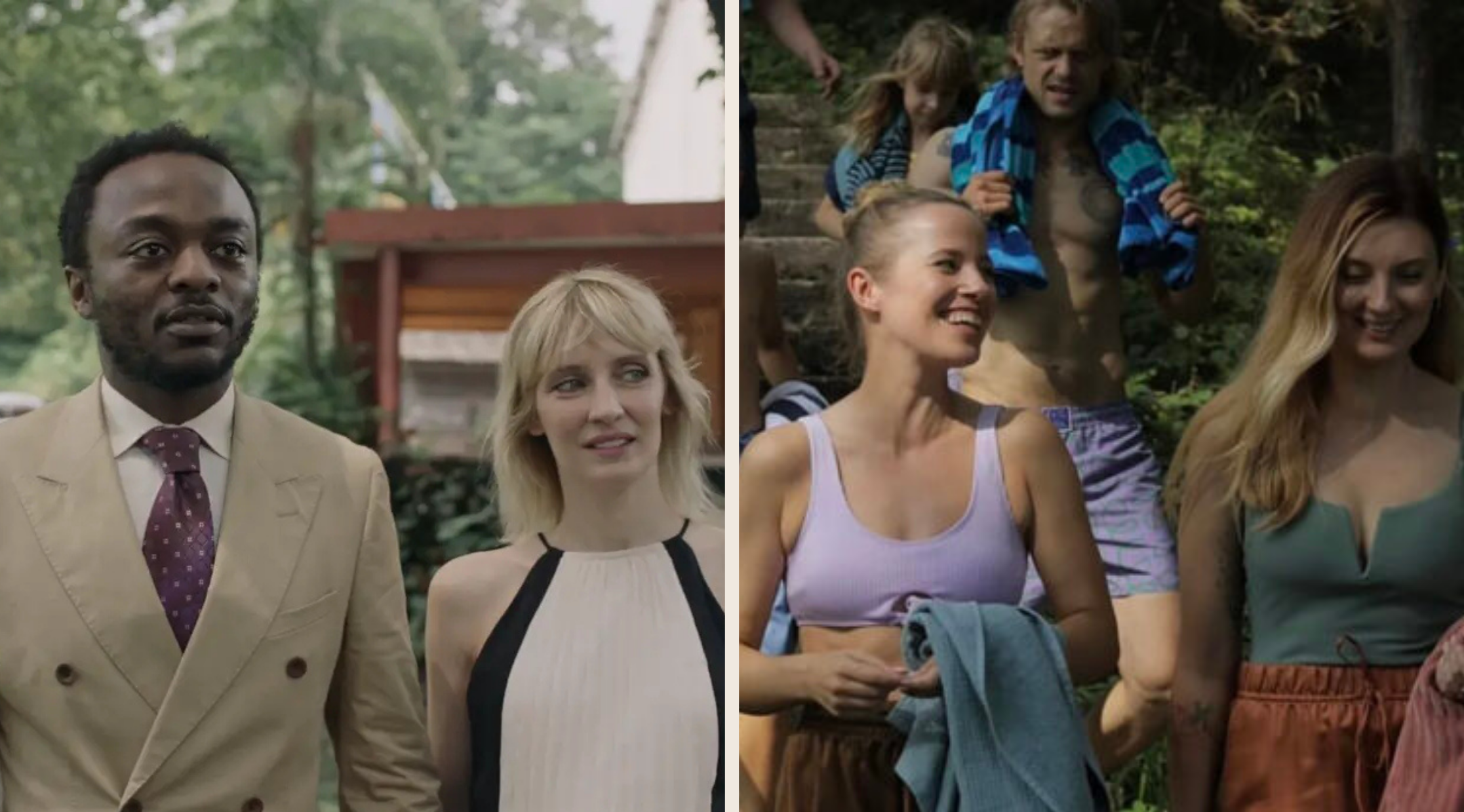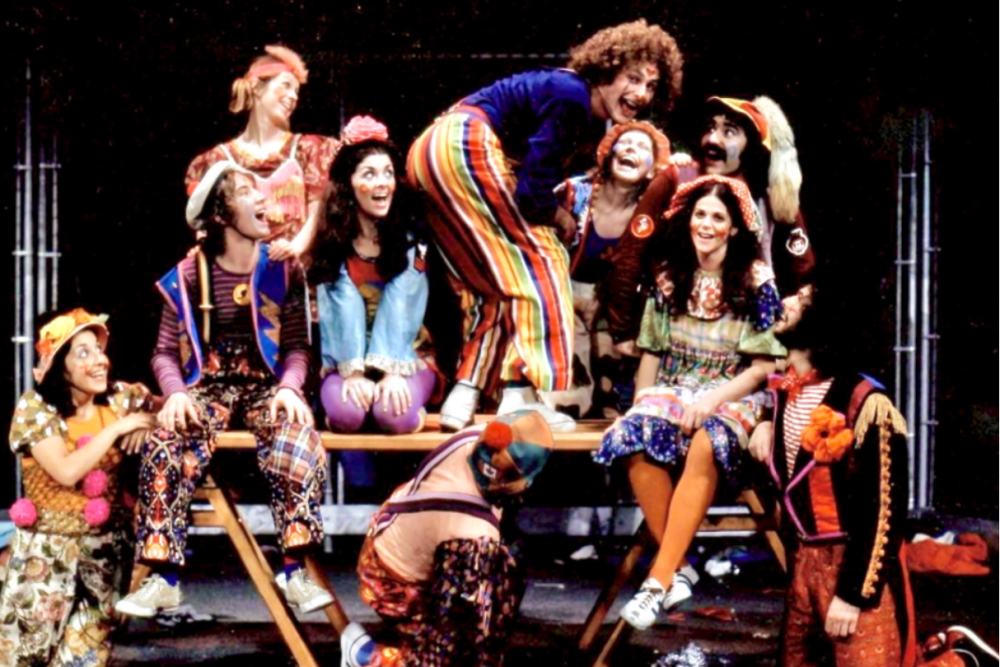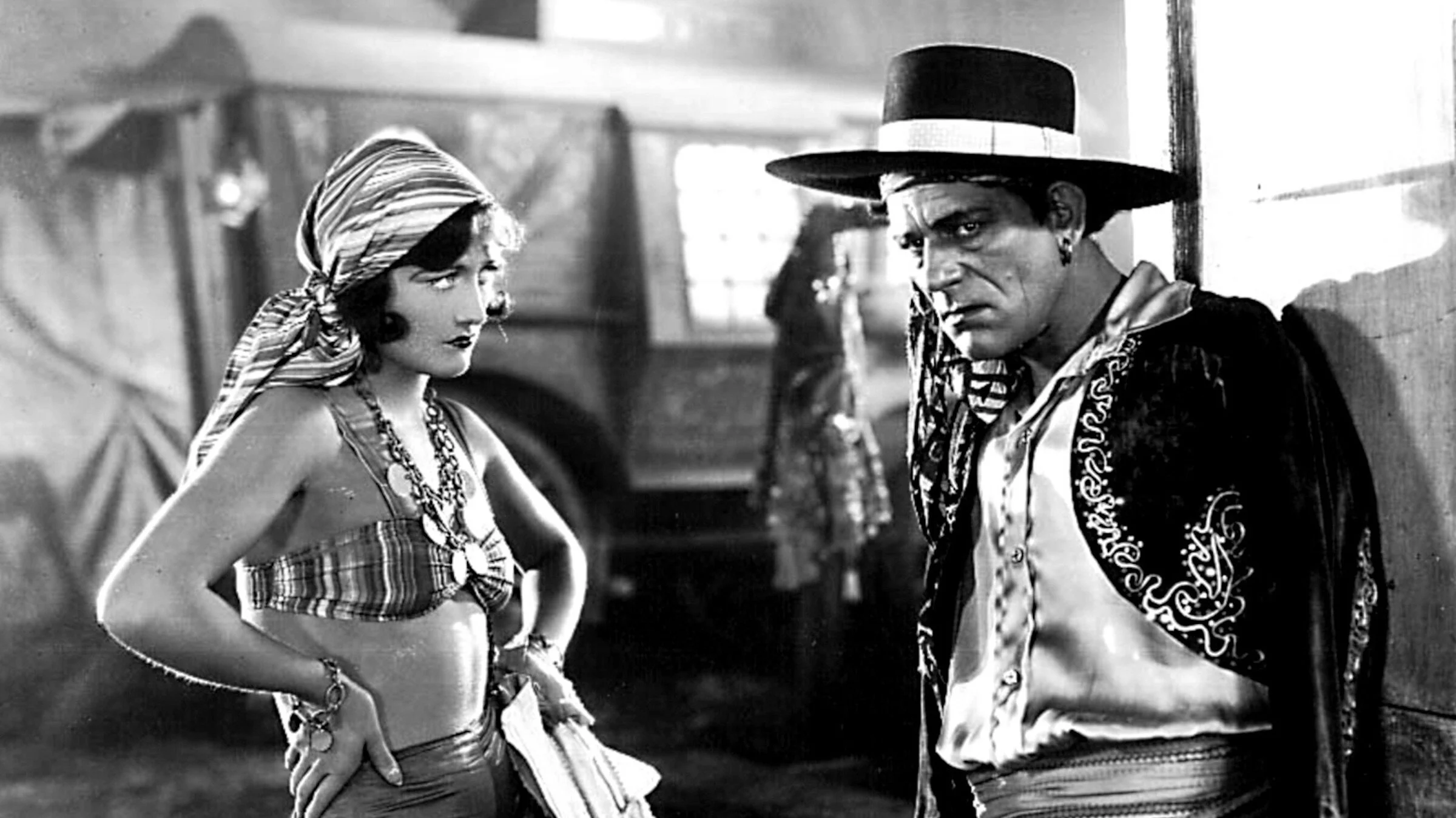Stir Q&A: Things We Feel But Do Not Say writer-director Lauren Grant talks about the silence around miscarriage
“I want more art to talk about the things we keep to ourselves”
Gita Miller and Aaron Ashmore hand in subtle performances as a couple grappling with loss in Things We Feel But Do Not Say.
WRITER-DIRECTOR Lauren Grant’s Things We Feel But Do Not Say, part of the VIFF Short Forum, packs a considerable punch with almost no dialogue.
Genevieve (Gita Miller) is at the changing room of a local pool when she texts her husband the simple, desperate words, “It’s happening.” The rest of the film follows her near-wordless journey through the grief of miscarriage—a loss that many women feel they must endure privately.
We talked to BC-born Grant about her directorial debut, which comes after years of working as a producer (most recently on Sugar Daddy) and which draws on painful personal experience.
Catch Things We Feel But Do Not Say on October 6 at 8:45 pm and October 7 at 4 pm at the Annex, as well as online via VIFF Connect until October 11, as part of VIFF Short Forum: Programme 3.
Why did you make the decision to have the lead character go through this experience almost entirely without words?
Miscarriage is a silent experience in so many ways and the inspiration for the film was to capture that internal grief and isolation. There is an expectation that because it is ‘normal’ or ‘common’ or because it is ‘early’ that the grief and pain are not valid in society. By having Genevieve, the lead character, not speak, it was a chance to explore how we hold pain in our bodies even from those closes to us, like her partner Mark.
Originally I had wondered if the film would be a woman who speaks a lot (like me) but never really says what she is truly feeling, but I felt a performance driven, almost silent film spoke louder than a lot of distracted words.
What implications and challenges did that hold for the shoot?
When I was writing, I was a bit worried since the script fully relies on an incredible performance. I worked with casting director Millie Tom, who cast the first feature I produced, Picture Day, and she brought such incredible talent into the room (virtually as it was all done through self-tapes). When I saw Gita’s audition and a previous film she had done, I knew instantly she was Genevieve. I’ve also worked with Aaron Ashmore on a few projects and imagined him in the role from an early stage. When you have talent like these two, it made it not complicated. They were incredible together and very generous in the process. I also read Judith Weston’s book Directing Actors ahead of the shoot. I’m a big believer in being prepared.
Lauren Grant
You help draw out an incredibly intimate and nuanced performance from Gita Miller, in a role that requires her to convey inward rather than outward pain. What was most important to you in the portrayal?
Gita is an incredible actor, and we had a few zoom calls ahead of filming. I would have loved to have rehearsals, but it was tricky at that stage of the pandemic. I knew from her audition that she could convey so much with very few words, so we spoke about the physical nature of a miscarriage and the emotional toll it takes. For me, the character is trying to get through the physical before she can start to process her grief. Yet for her partner, he isn’t experiencing the physical pain and discomfort, so he is also stuck in this grieving limbo.
The most important thing for me was to convey the invisible masks we put on in society. Women especially are conditioned to put on a brave face, so Gita and I talked a lot about where the character was at emotionally scene by scene, and when she is letting people in. It is why we film her alone so much where she can no longer hold back her emotions. Yet it is a controlled dance as she isn’t ready to let go as she moves through the medical process before being able to sit with the grief.
Gita is so talented, creative, and generous. We were able to create a process that worked for us and the intensity of the days. That isn’t to say she and Aaron didn’t have a few laughs - even at me when I was lost for words – a very rare event. Their performances at the end of the film left me speechless and I remember them joking on their mics “Did she hate it?” and I was standing alone at the monitor tearing up, so no, I definitely didn’t hate it. That’s my favourite picture of me on set – just taking it in at the monitor in my own living room.
You drew from personal experience with miscarriage. What is your opinion about why it is so rarely talked about, and what needs to change?
There are a lot of things in society we have been conditioned to keep silent about. The idea came to me one night as I imagined all the salt in the wound moments within a trauma. Right away I knew the film would start at a pool. Swimming is my happy place, and I can imagine having a miscarriage in public and in a place that brings you joy to be so hurtful and yet aggravating. It is also about the little insults of the experience—seeing kids or pregnant people seemingly everywhere, having blood ruin your favourite pants, or having co-workers unknowingly say something completely unhelpful. By making the film, I wanted to share an experience that I barely shared when it happened yet still has a profound effect on me.
I want more art to talk about the things we keep to ourselves as I think every time someone speaks out – whether in film or someone famous like Meghan Markle—we offer an outlet and a collective acknowledgment that the status quo of how miscarriage and infant loss is handled by society is not sufficient. I also hope the film speaks to the idea that we never really know what is happening for someone. You know, the saying about we don’t know what battles someone is fighting. I hope it reminds folks to be kind—we are missing that lately.
You've long worked on the producing end of film. What made you decide to take the director's seat?
I’ve always had a clear vision of the films and filmmakers I want to produce and work with. Moving to the director’s seat was about figuring out the stories I wanted to tell from my perspective. Kelly McCormack (writer/star/producer of Sugar Daddy) will often joke about my fugue state—in the middle of the night or doing something mundane—where I just have an idea that comes to me so clearly in my head. This was one of those moments. I saw the opening and the ending so clearly and visually. I read The Artist’s Way by Julia Cameron earlier this year (after filming, actually) and she talks about writing as hearing the characters in your head and just transposing what they have to say onto the page. I’ve always had that since I was a little kid, that I can make up stories and know who my characters are. As I write, they become something else, and then casting and working with Gita made it even more distanced from myself. The film is based on my experience with having two miscarriages, but it isn’t fully autobiographical. It is the jumping-off point to tell a story of isolation when you are also surrounded by love. I wanted to make this film because I want others to know they aren’t alone and that maybe sharing could help.


